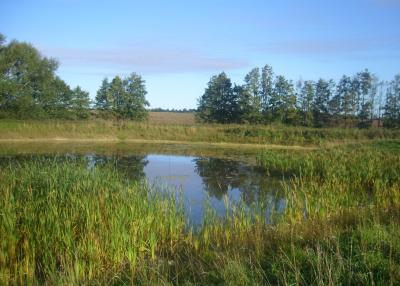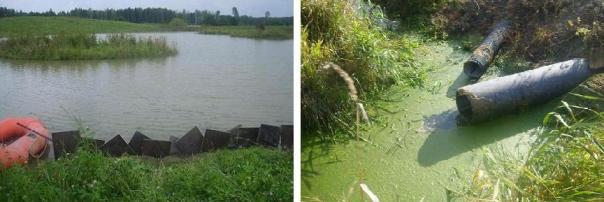Catchment factors affecting particle and phosphorus retention in wetlands receiving agricultural runoff.

Background
Too large inputs of nutrients, i.e. phosphorus and/or nitrogen can cause eutrophication which is a major concern in many lakes and in the ocean. It may cause algal blooms, anoxia and eventually fish kill. Phosphorus losses from arable land is a large contributing factor to this problem. In Sweden, the losses have been shown to be highest in areas dominated by clay soils. But it is questionable whether small clay particles settle within wetlands.
Phosphorus is highly reactive and often transported in particulate form. Wetlands can act as a last buffer by retention of particle-bound phosphorus through sedimentation. Studied on numerous wetlands has shown that retention increases with an increased phosphorus load (Braskerud 2002, Koskiaho et al 2003, Kadlec 2005, Braskerud et al 2005).
Catchment characteristics, such as, soiltype, land use, slope etc., may determine both the amount of P that enters a wetland, how much that is bound to particles and how well these particles form aggregates. This in turn will affect how well they settle within a wetland. It is important for future estimations on wetland performance based on geographical data and for locating wetlands where they would be most efficient.
Aim
To investigate whether differences in net particle and particulate-P retention efficiency in constructed wetlands is related to differences in their catchment area characteristics.

Responsible for this page:
Director of undergraduate studies Biology
Last updated:
02/22/12
